Since 2014 settled in rural work and life at the commune / farm / homestead / sanctuary / school / art project Salmon Creek Farm / @salmon_creek_farm
Contact: PO Box 909, Albion, California 95410 / 2025 (at) fritzhaeg (dot) com / @fritz_____
Recent Exhibitions: Garden Futures: Designing with Nature, Vitra Design Museum / ‘Proposals for a Plaza’ / ‘Propuestas para una Plaza’ with Nils Norman, Museo Jumex, Mexico City
Recent Writing: Building Salmon Creek Farm: inside California’s ultimate creative retreat, Wallpaper* magazine / Fritz Haeg: Living with the Land, Frieze / A Garden Manifesto
Edited by Olivia Laing and Richard Porter
Recent interviews: Ahali Conversations / feature in Apartamento #28
~
FRITZ HAEG‘s work has included animal architecture, crocheted rugs, domestic gatherings, edible gardens, educational environments, preserved foods, public dances, sculptural knitwear, temporary encampments, urban parades, wild landscapes, and occasionally buildings for people. Recent projects include Edible Estates – an international series of domestic edible landscapes; Animal Estates – a housing initiative for native wildlife in cities around the world; Domestic Integrities – installations and gatherings staged on massive crocheted rugs of discarded clothing and textiles that expand as they travel; various projects of designing, constructing, parading & rewilding; and Sundown Schoolhouse – an evolving series of educational environments and initiatives which evolved out of the Sundown Salon gatherings at his geodesic home base in the hills of Los Angeles. In late 2014 Fritz Haeg began a long-term project and new chapter of work with the purchase of the historic 1970’s commune Salmon Creek Farm on the Mendocino Coast.
Haeg studied architecture in Italy at the Istituto Universitario di Architettura di Venezia and Carnegie Mellon University, where he received his B. Arch. He is a Rome Prize fellow – in residence at the American Academy in Rome from 2010-2011, a MacDowell Colony Fellow (2007, 2009 and 2010), Montalvo Arts Center fellow (2012), nominated for National Design Awards in 2009 and 2010 and a 2014 California Community Foundation Visual Art Fellow. He has variously taught in architecture, design, and fine art programs at Princeton University, California Institute of the Arts, Art Center College of Design, Parsons School of Design, the University of Southern California, and Wayne State University in Detroit as the Elaine L. Jacob Chair in Visual Art visiting professor.
Haeg has produced and exhibited projects at the Walker Art Center; the Whitney Museum of American Art; the Guggenheim Museum; the Museum of Modern Art; Tate Modern; the Hayward Gallery; Arup Phase 2, London; the Liverpool Biennial; Museo Jumex, Mexico City; Casco Office of Art, Design and Theory, Utrecht; Stroom, Den Haag; the Netherlands Architecture Institute; Pollinaria, Abruzzo; Blood Mountain Foundation, Budapest; SALT Beyoğlu, Istanbul; the Israeli Center for Digital Arts; Mass MoCA; the deCordova Museum and Sculpture Park; the Center for Advanced Visual Studies at MIT; The Aldrich Contemporary Art Museum; the Institute of Contemporary Art, Philadelphia; The Indianapolis Museum of Art; the Broad Art Museum, East Lansing; San Francisco Museum of Modern Art; the Wattis Institute, San Francisco; the Berkeley Art Museum; the Hammer Museum; the MAK Center, Los Angeles among other institutions. His work has been published internationally, including profiles and features in The New York Times, Financial Times, Frieze, Artforum, The Independent, Dwell, Men’s Vogue, BBC, NPR, ABC World News Tonight, CBS Evening News, and The Martha Stewart Show. His books include “The Sundown Salon Unfolding Archive” (Evil Twin Publications, 2009) and “Edible Estates: Attack on the Front Lawn” (Metropolis Books, 2008. 2nd ed. 2010), “Wildflowering LA” (LAND 2014), “Propuestas para una Plaza” (Museo Jumex, 2019).
Salmon Creek Farm
Salmon Creek Farm was established as a commune on the Mendocino Coast in Albion, California in 1971 by a group of young people disenchanted with mainstream society and searching for something else. Along with many other communes in the area, SCF grew out of the student protest culture of the late 60’s, resisting the Vietnam war and general mindless consumer conformity, while promoting issues like civil rights, gay liberation, and environmental consciousness. Turning their back on systems they no longer believed in, they learned how to build their own homes, make their own clothes, grow their own food while living communally, exploring Native American rituals, and practicing consensus decision-making. One by one the original communards moved away – three of whom settled on three sides of the property – until an official closing ceremony was held in 2012. With its purchase by artist Fritz Haeg in November 2014, Salmon Creek Farm continues as a place to take a step back from contemporary urban society and starts a new chapter as a long-term art project formed by many hands, a new sort of commune-farm-homestead-sanctuary-school hybrid. (Check out the Instagram page, this New York Times story, the feature in Wallpaper*, and the Frieze videos “Salmon Creek Farm Part One: Beginnings” and “Part Two: Futures” )
designing, constructing, parading, rewilding, etc…
A series of related projects – dating back to his early architecture work – span a wide range of sizes and durations include designs for buildings, temporary encampments, scores for processions, knitted wearable sculptures and native landscape restorations. Recent examples include the Bernardi Residence in the Silver Lake hills of Los Angeles featured in the New York Times; the gallery design for peres projects in Los Angeles’ Chinatown; the score for the East Meets West Interchange Overpass Parade (2008), commissioned by the Indianapolis Museum of Art; a ground floor installation Dome Colony X in the San Gabriels (2009) at X Initiative in Manhattan; Something for Everyone (2010), projects throughout the grounds of the Aldrich Contemporary Art Museum; Composted Constructions (2011), a series of fabrications of recycled materials in Den Haag commissioned by Stroom; The Princeton Student Colony (2012); The Everton Park Foraging Spiral and Basecamp commissioned for the 2012 Liverpool Biennial; the Foraging Circle,(2013) a permanent Minneapolis Sculpture Garden/Walker Art Center installation; the native wildflower sowing initiative, Wildflowering L.A. (2013-14); and in 2014 a new series of cape/caftan/Parangolés/scarf/shawl/vestment/wrap knitted wearable sculptures.and most recently the year-long installation Proposals for a Plaza / Propuestas para tuna Plaza inspired by “A Pattern Language” in collaboration with Nils Norman for the sculpture plaza of Museo Jumex in Mexico City.
Sundown Salon & Sundown Schoolhouse
Sundown Salon gatherings occurred on periodic Sunday afternoons from 2001-2006 in the geodesic dome on Sundown Drive, galvanizing an extended community of friends, collaborators and peers from Los Angeles and beyond through events, happenings, gatherings, meetings, pageantry, performances, shows, stunts and spectacles. In 2009 “Salon Colada: Miami” is presented by MOCA Miami and “The Sundown Salon Unfolding Archive” (Evil Twin Publications) is released, documenting the series of events with photos and stories contributed by hundreds of the artists who participated. The 380 page accordion folding book unfurls to become a 140 foot long instant exhibition. In 2006 Sundown Salon transformed into Sundown Schoolhouse, an evolving educational environment originally based in the geodesic dome. The Schoolhouse was itinerant from 2007 to 2012, functioning at times as the personal school of chief student Fritz Haeg. Programming guided by his curiosities and housed in a series of dome tent environments where local artists and experts lead workshops, classes and seminars around particular themes and topics. Recent highlights have included Practicing Moving at the Center for the Arts Eagle Rock, Sundown Schoolhouse of Queer Home Economics at the Hayward Gallery in London, and At Home in L.A. at Human Resources. In summer 2014 the Schoolhouse re-launches regular seasonal enrollment programming at it’s home base with the 12 week session of The Los Angeles Seminary for Embodied and Civic Arts.
Edible Estates
Edible Estates was initiated on Independence Day 2005 with the planting of the first in the series of gardens in Salina, Kansas, the geographic center of the United States. Domestic front lawns are replaced with edible landscapes which are then documented in photos, videos, stories, printed materials, and exhibitions. Other regional prototype gardens have since been planted in Lakewood, CA in 2006; Maplewood, NJ and London in 2007; Austin, Baltimore, and Descanso Gardens, Los Angeles in 2008; Manhattan in 2009; Ridgefield, CT and Rome in 2010; Istanbul in 2011; Budapest, Hungary in 2012. The final three editions are planted in Holon, Isreal; Aarhus, Denmark; and Minneapolis-St. Paul, MN in 2013. “Edible Estates: Attack on the Front Lawn” (Metropolis Books, 2010, 2nd ed.) documents the first eight gardens in the series, with stories from the garden owners and framed by essays from renowned garden writers.
Animal Estates
Animal Estates proposes the strategic reintroduction of native animals into our cities with an ongoing series of regional events, publications, exhibitions, and estate designs. The project debuted in New York City at the 2008 Whitney Biennial with commissioned performances and installations in front of the museum, including a 10 foot diameter eagle’s nest perched over the entry canopy. It has since been followed by six other editions in 2008, commissioned by museums and art institutions in the U.S. and abroad including Center for Advanced Visual Studies at MIT, Cambridge; SFMOMA, San Francisco; Casco, Utrecht; Cooley Gallery at Reed College, Portland; and most recently Animal Estates London HQ: Urban Wildlife Client Services at Arup Phase 2 in 2011 and The Port of Rotterdam in 2013.
Domestic Integrities
Domestic Integrities turns it’s attention to local patterns and rituals of interior domestic landscapes, the way we use what we resourcefully find around us to artfully make ourselves at home, bringing the outdoors in. Domestic Integrity Fields are charged sites – on crocheted rugs of discarded textiles – to test, perform, and present how we want to live. One rug in each continent gradually expands as it travels from city to city. Full editions of the project are commissioned and presented by Pollinaria in Abruzzo (Jun 2012 – June 2013); MoMA, New York (Sep – Nov 2012); The MSU Broad Art Museum (Sep 2012 – Jan 2013); The Hammer Museum (Feb – Apr 2013); The deCordeva Museum (May – Aug 2013); The Walker Art Center (Aug – Nov 2013) with Fritz Haeg: At Home in the City an exhibition and year-long series of projects, events and installations; and The Berkeley Art Museum as a part of the experimental exhibition The Possible (Jan – May 2014) curated by artist David Wilson.
Selected Profiles & Features
New York Times Topics Page / T Magazine / NYT – Style / NYT – Bernardi Residence / NYT – Edible Estates / Financial Times / Los Angeles Times profile / NPR – Animal Estates / NPR – Edible Estates / The Independent / Frieze – essay, 2009 / Frieze essay, 2010 / Frieze – profile / Frieze – Edible Estates / BBC Radio / Dwell video / Dwell Magazine / Men’s Vogue (pdf) / KCET / Creative Time / Archinect / Treehugger / ABC World News Tonight / index magazine / complete press list
Past Assistants
Keith Clougherty, Domestic Integrities assistant, 2013 / Reid Ulrich, studio assistant 2012 / Marco Rovacchi, Domestic Integrities E-1: Abruzzo, assistant, 2012 / Brent Pilkey, Sundown Schoolhouse of Queer Home Economics, director, London, 2012 / Joanne Bristol, Animal Estates London HQ director, 2011-12 / Jena Lee, studio assistant, 2009 / Claire Zitzow, studio assistant, 2009 / Colin Blodorn, studio assistant, 2008-09 / Stephanie Kern, studio assistant, Spring 2008 / Erica Browne, New York Animal Estates assistant, 2007-08 / Kim Anderson, studio assistant, 2007 / Matt Au, studio assistant, 2007 / Louis van Leer, studio, 2006-07 / Katie Bachler, Gardenlab assistant, 2005-07 / Pablo Cavero, studio intern, 2006 / Aubrey White, Gardenlab team, 2005-06 / Fiona Ryan, Sundown Salon assistant, 2005-06 / Erin Marshell, Gardenlab and studio assistant, 2005 / Sarah Skaggs, Sundown Salon assistant, 2005 / Juanita Meneses, studio assistant, Summer 2005 / Krystal Chang, studio assistant, 2004-06 / Jessica Dobkin, studio assistant, 2004 / Natascha Snellman, Sundown Salon assistant, 2004 / Marte Eknaes, studio assistant, Winter 2004-05 / Gabie Strong, studio intern, Summer 2004 / Eric Lindeman, studio intern, Summer 2004 / Brian Howe, studio intern, Summer 2004 / Scott Franklin, studio intern, Summer 2004 / Sven Neumann, Bernardi Residence consultant, Summer 2004 / Emily Eyerman, studio intern, Summer 2003 / Jonathan Kleinhample, studio intern, Summer 2003
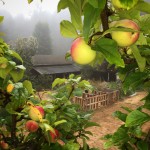
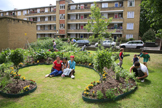
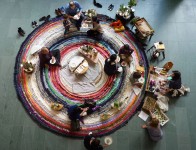

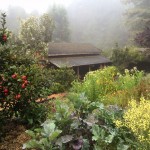
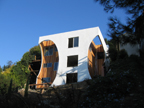
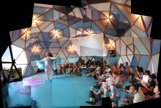
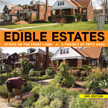
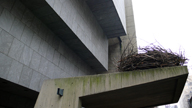
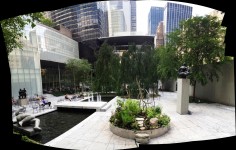
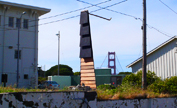
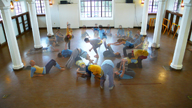
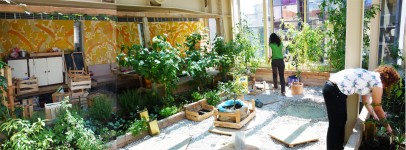
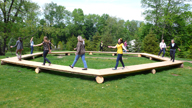
119 thoughts on - INFO & BIO
-
-
-
-
-
-
-
-
-
-
-
-
-
-
-
-
-
-
-
-
-
-
-
-
-
-
-
-
-
-
-
-
-
-
-
-
-
-
-
-
-
-
-
-
-
-
-
-
-
-
-
-
-
-
-
-
-
-
« Previous 1 2 3 Next »Hello Fritz —
Quick note to say how much I value the work you are doing in keeping the concept and sentiment of the arts colony alive.
I see that the late ruth weiss’s house in Albion is for sale. Conditions apply because it is part of the Mendocino Land Trust.
I wish someone like you or an arts organization would buy it and run it as a retreat space. She would love that.
Best
Andy Dugas
I saw that, and seems like it sold right away – hoping some good community-minded folks got it!
Dear Fritz,
I’m a graduate student with an absurdist ecological dissociation-repair focus, or something like that, looking at what use artists can be in the world with my Contemporary Ideas in Sculpture classmates. We’re examining social sculpture and activism, hyperlocal interventions and inter-species collaboration, and wondering what sculpture could mean next.
I’m really interested to know more about your Salmon Creek Farm project and shift away from the art establishment. If you would be willing to have a quick conversation or share a few thoughts by email we would be very grateful!
With thanks,
Emilie
Hello Fritz,
My family is in the process of moving from an acreage into town. Up until now we’ve been able to grow and preserve the majority of our family’s produce. Daunted by the idea of continuing this in town, I stumbled onto some of your amazing resources. Our home is 30 minutes from a college that focuses on agriculture with a landscape design and horticulture program. We would be honored to offer our yard as one of your edible estates to be used as a local example for both citizens and the college to encourage this lifestyle.
[…] following is an excerpt from Fritz Haeg’s Wikidiary about the experience of seeing the Michael Clark Company perform in London on June 8, […]
Dear Sir Fritz Haeg,
Good Day and God Bless 🙂
I am very much inspired by your passion for edible landscaping particularly your transforming urban estates into a vegetable haven. I am Maria Rufelie Gula of the Department of Agriculture from Tacloban City, Philippines the one hardly hit by Super Typhoon Haiyan. After the said typhoon many settlement areas were relocated which forced thousands of households to transfer leaving their source of livelihood away. Food availability then became our major concern, One of our projects is on Urban Agriculture which I long been wishing I can transform these resettlement areas into vegetable hubs in the city especially that we are 80% dependent on our vegetables from other regions. How I wish I could have technical advice/support from you as I am preparing a proposal on the development of edible landscaping models for urban-poor resettlement areas with limited space front yards (around 1m x 2m area) but still I believe can be productive if landscaped well and can be their sufficient source for food and the surplus as additional income. If successful, aside from addressing food availability and food sufficiency, around 52 resettlement sites with more or less 5,000 households will be benefited by the project which could be likewise adopted to other resettlement areas in the country. Looking forward to hearing from you Sir Fritz for I am your avid fan here. God bless you always.
Respectfully yours,
Rufel
Hello Fritz,
I’m a teacher/school librarian, and I am planning to ride my bicycle to all of the Wildflowering LA sites. What do you think I should expect to see now 6 years out from the projects beginning?
I assume that some of the sites are not being maintained. What could I do to reinvigorate them? My dream is that Wildflowering LA becomes a seasonal ritual, where thousands of families bike to their local sites a few times a year.
Any thoughts or suggestions would be greatly appreciated!
Sincerely,
Nicholas Rihn
Its 2020 and it seems like the world is on fire. In some places it actually is. Do you think that at the rate of everything falling apart, that there is a place for plant-nerds and eco-artits?
As a graduate student looking for inspiration, I found respite in your early work, but now it seems like you went into hiding? And so I wonder, if the world is on fire, what will the survivors look forward to?
Hi Doug, Thanks for your message, interest and provocative questions. I’ve become more focused on acting locally for the moment, slower more durational work than my previous projects, putting my energies into one piece of land (Salmon Creek Farm) and my community. But I’m hoping to share these experiences and some revelations along the way in a book that I’m working on this year, which I’m hoping might address these complicated questions you ask…
Fritz
Dear Mr. Haeg,
I am an assistant Professor of Art at the College of St. Scholastica in Duluth Minnesota. I am working with several groups on a larger scale restoration project of a creek which runs through our campus and we would like to invite you to work with us in some capacity, be it a lecture, design, a workshop, etc. Can you please provide information regarding interest, availability and costs for your services? This would be for the summer of 2021 and we are beginning to work on writing grants for this project. Best Regards
Dear Mr. Haeg,
I am an assistant professor of art at the College of St. Scholastica in Duluth Minnesota. I am working in conjunction with our Director of Sustainability and faculty in the Biology Department, along with the St. Louis County Soil and Water Conservation District to implement a restoration project on our campus of Chester Creek. We would like to invite you to be part of this project in the year of 2021 and I would like to know your fees for lectures, workshops and full projects, as we are trying to bring in a high end artist and ecologist. Please let me know about fees, availability and interest. Best Regards
Among the Center’s significant archive collections are documents, sketches, and models related to artworks by Kim Abeles, Lita Albuquerque, Amy Francischini, Fritz Haeg, Walter De Maria, Helen and Newton Harrison, Michael Heizer, and Ugo Rondinone. Significant holdings from organizations and individuals include Burning Man, the Center for Land Use Interpretation, Cape Farewell, and the Land Arts of the American West. The Center is also home to the Great Basin Native Artists Archive and Directory.
please submit a paper for our symposium: Symposium Dates: March 6-7th, 2020
Abstracts: Submission: Oct 14th, 2019 – Selection: Dec 14th, 2019
Website: http://www.animalgaze.org
Email:Your Abstract or Full Paper to: animalgaze@londonmet.ac.uk
Description: Shrinking horizons, slim pickings, poverty of scope. What new politics of nature are needed here for animals? What representations and spatial practices are required to redress the balance of our shared environments? What is a more animal-centric world like?
The third Animal Gaze symposium will bring together practitioners and academics to consider human/animal interactions and spatial practices as they manifest themselves in art and architecture.
We invite considerations of all kinds of animality and at all scales, in response to the following five loose themes: ‘House training’ invites explorations of the spatial, social and physical limits of our relations with animals and animality at the domestic scale. ‘In common’ seeks examinations of the social and political logics of public spaces both physical and ethereal, shared with other creatures. ‘Marking territories’ calls for considerations of how modes of production and representation shape animal space at wider territorial scales. What, for example, might the consequences be for the animal world, of advances in farming technologies such as robotics, artificial intelligence, and hydroponics? ‘Going feral’, invites investigations into human-animal behaviours which counter the order of things. What might a new wilderness be? ‘Scoping and visibility’ gives headway to an ongoing debate about the representation of animal presence – scale, size and intention.
Hello Fritz,
I’m a Chinese artist and lecturer teaching and doing socially and ecologically engaged art at Sichuan Fine Art Institute, Chongqing. I’m interested in your gardening and relational projects which have positive impacts on both environment and society.
I wonder if it is possible for you to do a three-days workshop between this Sept. and Dec. about permaculture and eco-art at our Institute that would hopefully inspire my students.
Your travel, accommodation and food cost will be covered and you will also be getting paid for doing the workshop.
Thank you for your consideration!
Best wishes
Jin Lipeng
hi fritz!
your friend katia 😘
[…] artists and designers of the 1960s and ’70s have influenced their work and thinking today. Here Fritz Haeg discusses the […]
Hello Fritz,
Hi, my name is Stephanie and I’m an American freelance environmental writer living in Switzerland. I’m writing an article for Civil Eats (www.civileats.com) on people and companies focused on changing America’s lawns into biodiverse, edible landscapes, and I was hoping to talk to you sometime this coming week about your experience in that field and the history of the “unlawning” movement. Would you please get in touch with me?
Thanks!
Stephanie Parker
[…] a hole in your pocket? You could be the new owner of this California desert home by architect Fritz Haeg. This 1 br 1 ba home features a unique blend of natural materials and modernist style, and sits on […]
Hello Fritz
I am writing a document for a large organisation and illustrating examplar projects + recommending artists. I would like to include your work. Could you contact me? Many thanks
Dear Fritz Haeg,
My name is Lola. I’m studying art at the Institute of Art in Toulouse, France. It’s my third year and I have to write a little text for my diploma. I would like to talk about art and ecology and discuss the fact that an artist could be an activist in his different projects.
I discovered your work and I am particularly interested in the
on-going series Edible Estate which I would like to present as an example of an art work which is activist in a sense.
If you are willing, I would like to ask you some questions in order to better understand your work and how you see it. For sure my text will not be published, it will only be read by my teacher.
In an interview you gave for Frieze I read the sentence “I prefer to let the people decide if I’m an artist or not”. I understand this remark, but if you don’t really see yourself as an artist, or wish to be understood as an artist why do you choose the art system (it’s institutions, galleries, funding etc.) in which to work?
How could you explain your relation with the Institutions of art? Do
you feel exploited? Do you know why they accept to work with you? Is it complicated to be represented by institutions of art with your kind of work?
Was it for you a necessity to work on ecology? Already when you were at school?
Do you define yourself as an activist?
You say that you studied architecture but did you do any studies in botany or agriculture or anything like that?
I realise that you must be busy, and maybe I have posed too many questions, but I hope you can answer some of them. In any case, I admire your work a lot and I hope to meet you one day.
Thank you so much for your time and attention
Regards,
Lola
Thanks for your questions, I just sent you some responses…
Good luck!
Fritz
Dear Fritz,
I’m writing concerning an upcoming Biennial exhibition that we would like to speak to you about, I can’t find a contact email or number for yourself or Salmon Creek so please email me?
The curator would be thrilled to speak with you.
Best wishes,
Chloe
Dear Fritz Haeg,
I am a foreign reporter at Der Spiegel, the German newsmagazine, and I would love to learn more about your work and the Salmon Creek Farm – could you please send me your e-mail address?
Many thanks, and all the best,
Samiha Shafy
DER SPIEGEL
Ausland / Foreign Desk
Hamburg, Germany
http://www.spiegel.de
Hi Fritz,
I’m a small landowner and toymaker in northern Minnesota. I have long been interested in creating artificial sculptural habitats for wildlife to stand-in for environmental losses. You are the first artist I have discovered addressing that. If you ever need a second location to trial such features
consider our Green Island Preserve which exists entirely inside a small city in northern MN…. http://www.greenislandpreserve.com
Kent
Dears, I am visiting California and would love to meet you , and the farm. Is it possible to join for a couple of days? Thank you
ambre
9283010816
Fritz,
I am with the Prairie Gateway Chapter ASLA and we are hosting the Central States event in Kansas City this year on April 11-13 2018. Our planning committee wanted to reach out to see if you were interested in presenting a talk for continuing education.
Misty Riley
[…] made way up into the hills of the 90065 (Glassell Park) to meet with artist, designer, and activist Fritz Haeg about becoming on-site caretakers of his most unique creative compound, the LA Domestead. We were […]
Dear Mr. Haeg,
On behalf of the Visiting Artists and Scholars Committee of the School of Art and Design, NYS College of Ceramics at Alfred University, I would like to invite you to participate in a program entitled “Design for Change: Solutions for Rural America.” Our goals include engaging the power of the design process to create tangible, positive change. We envision a series of projects, workshops, lectures, exhibitions, and/or publication of the process and its results to take place during the 2018–2019 Academic Year. Fritz, your empathic social consciousness and extraordinarily multi-disciplinary approach to art and design resonate greatly with the goals of this commune/ity design initiative. The “Design for Change” series seeks to include socially proactive participants from a variety of disciplines, such as Emily Pilloton, Sanjet Sethi, Future Farmers, Ryan Swanson, and Mazatl/Just Seeds.
We are currently working with community members to identify salient needs and discover what we, as artists and designers, can do to help. We are also pursuing funding for the program.
Please let us know if you are interested and available. If so, please let use know how best to reach you to discuss the exciting possibilities for this program and your participation in it.
I look forward to hearing from you.
Sincerely,
Judy Livingston
Associate Professor of Graphic Design
Chair, Visiting Artists and Scholars Committee
Hello Fritz,
I am interesting in using a number of your ‘before’ and ‘after’ pics from your front yard edible landscapes in our Gardening magazine. Can you please contact me at colleenq@yankeepub.com? I would greatly appreciate it.
Colleen
Hi Fritz,
Was at CMU this weekend for our 25th. Missed seeing you. Looks like life is fantastic. Happy for you. Would love to see you if you are ever in New England or NYC.
Best,
Aelan
Hi Fritz, I am a friend of Luis C. and would like to invite you to Seattle to give a lecture in June. (The lecture is officially known as “The Robert ‘Ned’ Behnke Annual Lecture”.) Could you please contact me as soon as possible and let me know if you are interested? I tried reaching you by email to no avail. Thanks and best wishes, Melissa
Dear Fritz
I am a friend of Gert Jonkers and Bernhard Wilhelm who have forwarded me your contact details, but the Email bounces back.
Please be in touch.
mail@jinakhayyer.com
Thank you, Jina
Dear Fritz
how are you?
Carla and Gianfranco Baruchello
Dear Fritz Haeg,
Congratulations with your glorious and breathtaking project. I love to peruse your posts on instagram. I have the impression you receive many requests therefore I hope you do not mind me adding one. I am a visual artist based in Amsterdam, currently working on a documentary on the Commons. With this project I aim to show how contemporary communities in various realms use this historic concept for sharing resources and solving problems.
Would you be willing to briefly answer several questions on your project which would be published in this documentary project? It should only take a brief moment. I would truly appreciate it.
Warm regards from snowy Amsterdam,
Raymond Taudin Chabot
Good morning
Could you please contact me? We would like to present some images of your work “Animal esattes 5.0” in a French magazine dedicated to Animal tracks but I cannot find your contact.
Hello, a friend recommended your work to me. I am a multi-skilled artist/carpenter http://www.laruebuilt.com with a passion for gardening and sustainable living. I would love to come see the work you are doing, and perhaps exchange knowledge/skills for a week or two, perhaps in the spring.
Are you accepting temporary residencies?
[…] [principal architect/founder of MVRDV]; Mason White [co-founder of Lateral Office]; Fritz Haeg [Fritz Haeg Studio, Sundown Schoolhouse]; Charles Waldheim [Associate Dean and Director of the Landscape Architecture […]
[…] following is an excerpt from Fritz Haeg’s Wikidiary about the experience of seeing the Michael Clark Company perform in London on June 8, […]
We are thinking of putting together an eco art show in Butler. Let’s talk. jimisru@hotmail.com
Jim
Thanks for your message Jim, check out the notice on top of this info page, I’m not in position to take on any shows or projects for a while… Cheers, Fritz
Hi Fritz!
Jack Moll here! I hope your well! I haven’t seen you since the Rainer performance at the Getty and the pilgrimage to Mendocino. I’d love to hear from you to see if there’s an opportunity to come and be a part of the Salmon Creek Farm this fall.
Best,
JTM
[…] been trying to envision a different life for us. While watching Fritz Haag rebuild Salmon Creek Farm from afar and reading the catalogue for Hippie Modernism (opening in Feb […]
Hi Fritz, Erik Jutten from Rotterdam here. Daan den Houter – my fellow boardmember of City in the Making, a fun person and good artist is comming to LA. Do you have or know a cheap place to stay from this wednesday until sunday?
Greetz,
Erik.
Ps 18th of juli until 15th of august I will be in Detroit again with Mitch, Gina, Graem and Faina 😉 are you around too?
Hi Fritz,
Im friends with Leif and Ido, and wanted to send you an email, but it bounced back. Please let me know how I can forward it to you, thanks!
Dear Fritz,
I’m a journalist from The Guardian / Observer – have written you a lovely email but it bounced back – please advise how to contact you again!
Many thanks (we spoke once before)
Hello Fritz! I am an artist currently living in LA (with previous lives elsewhere 🙂 ) who has long dreamed of an “art farm”…. I’ve learned of Salmon Creek and am wondering if you are accepting residents for a portion of this summer? (I’m imagining a combination of helping with construction and farming efforts/contributing to the community as well as time to further my own work). I’d love to get in touch and learn more of what you are seeking/if this is a possibility. Thanks!
Hello Heidi,
Thanks for your interest in Salmon Creek Farm. Check out the webpage salmoncreekfarm.org for more info. I’ve been overwhelmed with inquiries, but at this point we are only soliciting letters of interest from students, recent grads, and carpenters. Send a letter to the PO Box listed if that is you. We are early in the process of reviving the place, and I am still gradually introducing my own extended community of artist friends to the place, many are still planning first visits.
Regards,
Fritz
Hello Fritz–I am Stephen Thomas of Oxbow School. My wife, Patricia Curtan, and I have been here in Mendocino for a break, and would really like to visit Salmon Creek Farm. We are leaving today, Friday 8 April, and have tried email and text to no avail, if it would be possibile to visit today, could you text or call me at 510.708.3105?
If not this time, we will tra to connect for a future visit.
/st
Sorry to miss you! Next time…
Aloha Fritz,
Just read of your Salmon Creek, Mendocino project in March 20 edition of “T” (New York Times Style Magazine). Having lived in that area for 35 years I agree it is an ideal place to breathe deep and manifest projects without distractions from urban confetti.
Just a few miles up the road I am offering for sale our 23 acre estate. For the past 20 years my family has lived there creating a most ideal home/workplace/retreat. Features include fabulous 4 bd home, 2 bd handmade cabin, pond with another cabin, separate large yoga/dance studio, workshop. The 1/4 mile creek through center of steep Redwoods form a breathtaking 100 foot waterfall. Located 1 mile from Mendocino town.
Please pass my contact info to potential principal buyers.
“We have our brush and colors~
paint Paradise and in we go.”
Thanks,
Daniell
bayview@mcn.org
Sounds wonderful, do you have a link to a webpage on the property?
Hi Fritz, I contact you on behalf of Editoriale Lotus. We had the pleasure of publishing your work in Lotus international #149. We are currently working on an exhibition on urban agriculture for the XXI Triennale di Milano and would like to present the Edible Estates project. I tried contacting by email but it doesn’t seem to work. Let me know if you agree on presenting your work and how I may contact you.
Best regards, Maite Garcia Sanchis
Hello Fritz… I am one of the founders of The Farm community in Tennessee in 1971, where I was the chief architect. I am an artist, engineer and solar designer/builder. I am currently living in Comptche (about ten miles from you) where I am helping my daughter and son-in-law remodel their house on 11 acres to upgrade it before selling… they have purchased a beautiful home on 77 acres in Sam’s Valley, Oregon (where I usually live). I will be here for the next couple of months… would it be possible to come meet you and view your project?
Wishing You Well…
Hi Fritz
I would like to nominate Wildflowering LA for an international public art award. I have tried contacting LAND but have had no reply. Please could your studio get in touch with me so we can discuss the nomination?
Thank you
best wishes
Sara
Hi Sara – Did you ever get in touch with LAND?
fritz—any chance you can help me!?–i RECYCLED my lawn and started to “yarden “–i planted natives, herbs, veggies, heirlooms. i met the required rubrics to attain official certification for a NATURAL WILDLIFE HABITAT with the NATIONAL WILDLIFE FEDERATION. the city destroyed my property because a neighbor complained—PLEASE CAN YOU HELP?— I need someone to testify in court that my landscape did not harm anyone and was in fact beneficial to all life on the planet!—
Hello Fritz,
I work for an art center in southeastern PA- I am the education curator and when I saw your bit on Your Art Assignment/PBS I was so moved. I would love to have you do a collaboration with us. Long distance is fine. Can we be in touch?
Thanks,
Beth
Hello Fritz,
I run a farm and artist residency at a spiritual community in upstate NY: http://www.themalloffound.com/ and I will be in your area for a few weeks in December, I would really love to connect! It would be great to hear from you.
Cheers,
Sarah